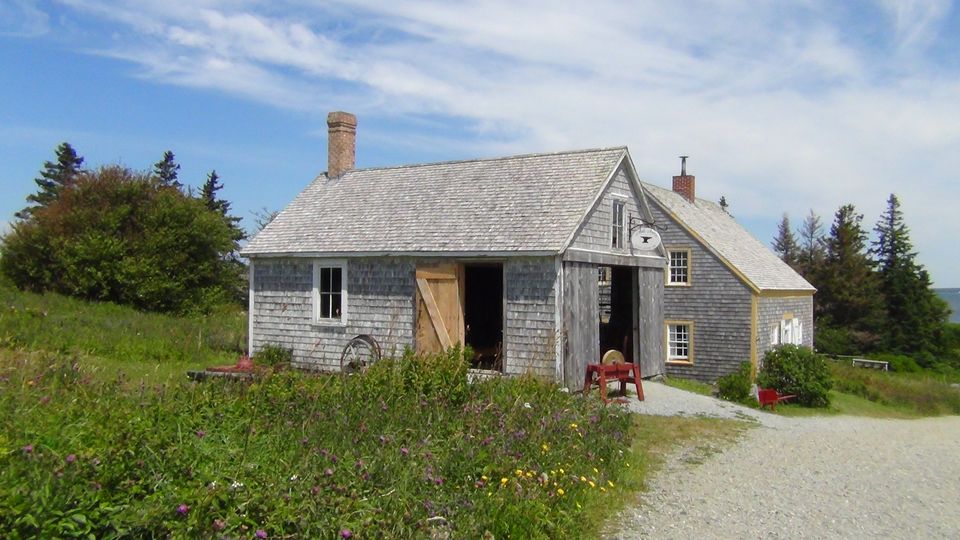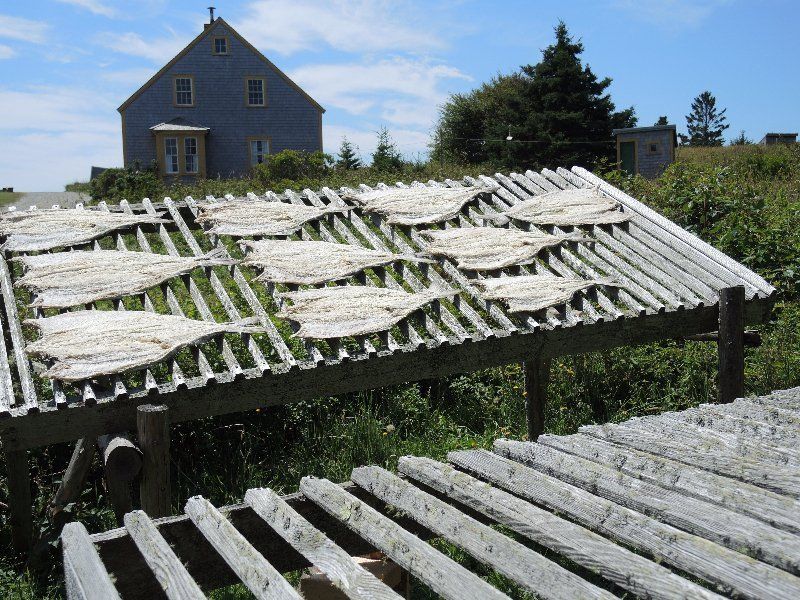Hurricane Arthur and the Pubnico Peninsula
As we handle this unpredictable winter with its sudden snow, its deep freezes, its thaws and high winds, we instinctively think back to times of pleasing weather. Yet my arrival in Nova Scotia last July was heralded by Hurricane Arthur and we viewed the aftermath of its destructive force during our travels.
We stayed for a few days in Yarmouth in the west, exploring the Acadian Coast and absorbing the history. During the Napoleonic Wars, Britain and France were enemies. The Acadians of French ancestry had farmed and established communities in Nova Scotia since the early 1600s. Since their loyalty to Britain was suspect, they were rounded up and expelled from the colony in 1755. Their lands were given to Empire Loyalists coming up from the US following its Revolution. After the Napoleonic wars ended, small groups of Acadians were allowed to return starting in 1764. But their fertile land was gone. They settled around the coasts of Nova Scotia, where they still live.
Université Sainte-Anne in the community of Church Point, preserves the heritage by teaching the culture and language. There are small towns with amazingly large churches and the Acadian flag flies everywhere.
South east of Yarmouth is the Pubnico Peninsula where we spent an enchanting day. Firstly we visited Le Village Historique Acadien de la Nouvelle-Écosse
(Historical Acadian Village of Nova Scotia) , a place that invites you to return to the early 1900s and wander through a village depicting Acadian life. Houses were brought to the site overlooking the Pubnico Harbour from real villages and the period costumed guides are local Acadians often telling stories of their own families.
We continued south down the peninsular and walked past the Pubnico Point wind farm made up of 17 majestic wind turbines at the edge of the ocean with a stony beach.
Finally we stopped off at Dennis Point where the wharf is host to the largest commercial fishing fleet in Atlantic Canada. My companion and I are familiar with many variety of sea gulls but at the wharf we encountered an unfamiliar breed with black head, dark grey wings and black tail, standing nonchalantly on the fencing. Others were running around sociably, loudly calling with a fast raucous high pitched cry.
On returning home I started researching on the internet. I found a copy of an article by Carla Allen from the July 11th 2014 issue of the Yarmouth County Vanguard entitled "Arthur blows new birds to Yarmouth."
The Laughing Gull had arrived in Nova Scotia after being blown across the Gulf of Maine during Hurricane Arthur. Although small numbers of Laughing Gulls have been documented as nesting in Nova Scotia from the mid 1800's, Maine is usually considered their northern limits now. In its breeding colours it is a fine looking mid sized gull with an average length of 16.5" (42cm) and a wingspan of 40" (102cm).
We crossed the road from the wharf and entered the famous Dennis Point Café and secured a table by the window. Very shortly thereafter, not another seat was free in the place. I cannot say I have ever had a more delectable creamed hot lobster sandwich. My friend had the seafood chowder. Also on the menu was lobster poutine, Digby scallops and clams, shrimps and locally caught haddock.
That was a day I will long remember. Do watch my short video. Though we saw much destruction from Hurricane Arthur on our travels through Nova Scotia, discovering the Laughing Gull was a benefit. It will remain to be seen if they try to fly home or if they, like the Acadians will come back and re-establish.













